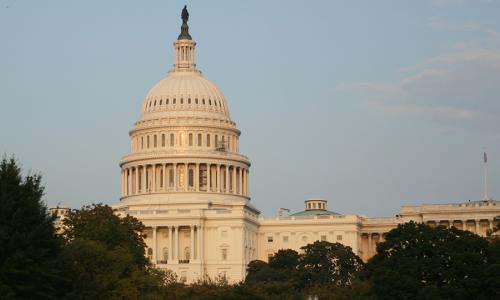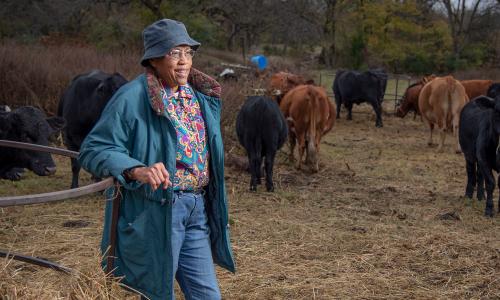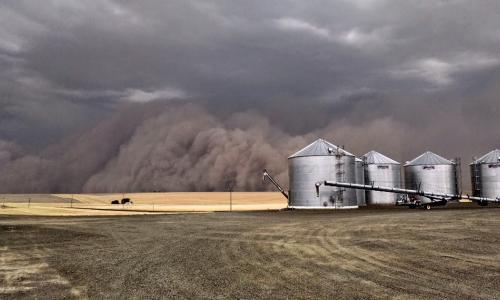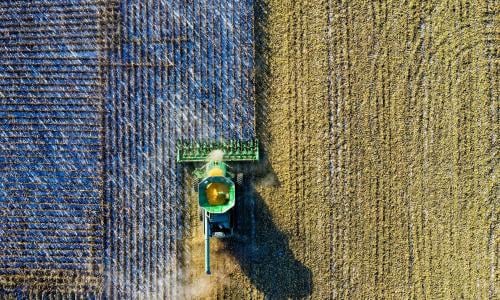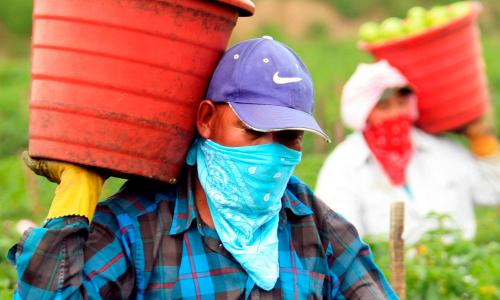The massive piece of legislation commonly referred to as the “farm bill” should really be called the “food and farm bill” because of its key role in how we eat.
The first version of the bill, passed during the Great Depression, was mostly concerned with helping farmers stay in business. But over time, the bill—and with it, our agricultural system—has been hijacked by a handful of powerful corporations that benefit from subsidies that encourage farmers to grow commodity crops, primarily corn and soybeans mostly used as feed in meat and poultry production. This corporate-dominated industrial system does little to make healthy foods like fruits and vegetables more affordable and accessible. It’s also bad for the environment. And as these “Big Ag” corporations have grown in power, they’ve taken advantage of farmers, workers, and consumers alike.
It’s time to take back control. In September 2022, more than 150 organizations representing tens of millions of people across the country joined together to call for a transformational food and farm bill that will make our food system more healthy, sustainable, resilient, and equitable. By shifting more of the bill’s $1 trillion in spending away from industrial agriculture and corporate welfare, we can protect the things that are truly important for the largest number of people.
You may be surprised at everything a truly transformational food and farm bill could do:
Pursue racial justice
Because of a history of structural and institutional racism in US agriculture, BIPOC (Black, Indigenous, and other people of color) farmers have difficulty securing capital, credit, land, infrastructure, and information. The next food and farm bill must confront this reality and recognize the immeasurable knowledge and value that communities of color, Tribal nations, and immigrants contribute to our food system.
Ease hunger
Too many families don’t know where they’re going to get their next meal, and this food insecurity is often a result of historic injustices. The next food and farm bill must protect and strengthen food assistance programs such as the Supplemental Nutrition Assistance Program (SNAP), which protects families from the consequences of poverty and hunger in hard times by ensuring adequate access to food.
Combat climate change
Droughts, floods, and other extreme weather caused by a changing climate hurt farmers, destroying their livelihood by making crop yields unpredictable, unreliable, and unsustainable. To help farmers become resilient in the face of climate change, the next food and farm bill must also be a climate bill. We will not avoid the worst effects of climate change unless the United States reduces its heat-trapping emissions, including from agriculture—so the food and farm bill must invest in research, technical assistance, and financial incentives that enable farmers and ranchers to reduce their emissions, store more carbon in their soil, and help their farms and workers withstand extreme weather. The bill should also reward farmers and ranchers who are already implementing such practices, and discourage practices that are harmful to the environment and public health.
Improve nutrition
Diet-related diseases such as heart disease and diabetes continue to grow, as do the associated costs in health care. Poor nutrition has become the leading cause of death in the United States—surpassing smoking—and lingering racial inequities in our society frequently leave communities of color without access to nutritious foods. The next food and farm bill must tackle this public health crisis by improving nutrition security, defined as “consistent and equitable access to healthy, safe, affordable foods essential to optimal health and well-being.”
Lift up food and farm workers
The COVID-19 pandemic revealed the vulnerability of the 20 million food and farm workers declared essential to feeding our nation. The next food and farm bill must invest substantially in the people who plant, harvest, process, transport, sell, and serve our food and administer our food programs, ensuring that they receive a living wage along with access to health care, clean housing, and the right to organize and join a union. Food and farm workers also deserve protection from pesticides and extreme heat, and employers that endanger their workers should face real consequences. In addition, the food and farm bill should support the aspirations of farmworkers who wish to become farmers, and access to citizenship for workers that does not tie them to exploitative labor practices and systems.
Protect farmers and consumers
Anti-competitive practices by the large corporations that have hijacked US agriculture are harming small-scale farmers, workers, and consumers; hollowing out rural communities; and damaging our environment. The next food and farm bill must promote competition in the food and agriculture sectors by challenging anticompetitive practices, while increasing long-term investments in local and regional food processing and distribution. This would level the playing field for farmers and offer more and better choices for consumers.
Ensure food safety
Every year, millions of people in the United States are sickened by pathogens in our meat, poultry, produce, and drinking water, and thousands of people die. Outbreaks of Salmonella, Listeria, and E. coli that originated on factory farms have highlighted gaps in our food safety net that place consumers at unacceptable risk. The next food and farm bill must do more to make the US food supply safe for everyone.
